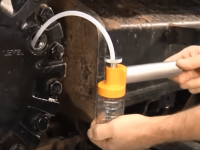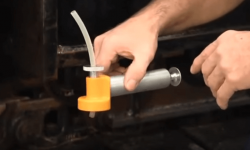Advice for Improved Oil Sampling
Proper oil sampling is the foundation of any lube analysis program. Irregular sampling procedures and inconsistent sample locations will lead to data that does not reveal problems adequately, or is interpreted to identify a problem that does not truly exist, resulting in unexpected downtime or unnecessary repairs.
Data interpretation depends on establishing “what is normal” in order to see “what is not normal”, and “normal” is best established through sampling from a consistent location, with a consistent method at consistent frequencies.
It would be better not to sample, than to take bad samples that provide misleading information. Obviously, sampling from a good location with a proper method is better, but better yet would be a great location, even if the method is not that good.
As an example, consider a system equipped with filtration and a reservoir that has a drain at the bottom. A well-flushed sample from the low-point drain would not be as telling as the first fluid from the filter inlet, in terms of the wear and contamination within the system.
Best of all, of course, is a proper procedure from a great location, but sometimes that may prove to be impractical until such time as proper sample ports can be installed.
Proper Sampling Criteria
1. Consistent location
2. Consistent procedure
3. Consistent frequency




